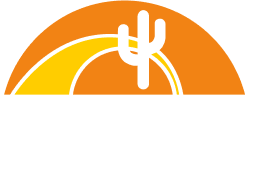National Preparedness Month
10 Ways You Can Prepare Your Jobsite For Emergencies
10 Ways You Can Prepare Your Jobsite For Emergencies
National Preparedness Month is here! Sponsored by FEMA, this initiative encourages Americans to take steps to prepare for emergencies in their communities. At Sunstate, we understand the importance of being prepared, especially on a busy construction site. Proper precautions can protect your team, equipment, and project from unforeseen events like extreme weather, fires, natural disasters, or chemical spills. Here are some essential tips to help you prepare your worksite and mitigate damage or disruptions before disaster strikes.
1. Assess your risk of weather or disaster-related hazards
Start by identifying specific hazards your jobsite is at risk of. Whether you’re facing hurricanes in the Southeast, tornadoes in the Midwest, wildfires in the West, or earthquakes along fault lines, every jobsite and locale faces unique threats if unprepared. Monitoring these risks is critical to staying resilient in extreme weather or disasters.
2. Create an Emergency Action Plan (EAP)
Develop an emergency response plan tailored to the specific risks of your jobsite. This plan should include clear procedures for evacuation, communication, and a first aid checklist. OSHA’s Emergency Preparedness and Response page lists hazards and response guidance. OSHA also has this e-tool to help you plan. All workers must be familiar with their workplace plan and conduct regular drills to keep everyone prepared.
3. Establish a communication protocol
Establish a transparent chain of command so all workers can contact supervisors and emergency services. Have two-way radios to maintain contact in case of power or signal loss.
4. Secure your equipment against extreme weather
Heavy rain, high winds, and falling debris can wreck your machinery. Safeguard all equipment so it’s properly secured and stored when not in use. Call Sunstate for ready-to-work equipment that is useful in an extreme event. Ensure you have temporary power, water pumps, and portable light towers to keep your site operational in an emergency.
5. Stock emergency supplies
Keep an emergency kit on-site that includes first aid supplies, flashlights, batteries, fire extinguishers, and other essentials.
6. Prepare for power outages
Power outages are common during disasters and weather events. Don’t go dark. Rent generators and towable/portable light towers, so you can maintain critical operations and ensure the safety of your crew when the grid goes down.
7. Address extreme temperatures
Many geographic regions are prone to extreme temperatures, which can be dangerous for workers. Renting temporary heating and cooling equipment is essential to keeping your team safe and comfortable during a heat wave or cold front.
8. Plan for debris and cleanup
After a disaster, quick cleanup is critical to resume operations. Renting skid steers, Georgia buggies, and chainsaws can speed up debris removal and get your site back on track.
9. Know OSHA’s preparedness for construction industries
Learn OSHA’s guidelines for the construction industry here.
10. Partner with a reliable equipment provider
In times of crisis, you need reliable equipment fast. Partner with Sunstate Equipment for access to a wide-ranging fleet of top-quality rental equipment, temporary heating and cooling, and jobsite solutions designed to help you weather any storm.
For additional information and resources on better preparing for emergencies, visit www.Ready.gov. For equipment rentals and used equipment sales contact us today at 1-888-456-4560.
©2025 Sunstate Equipment Co., LLC

